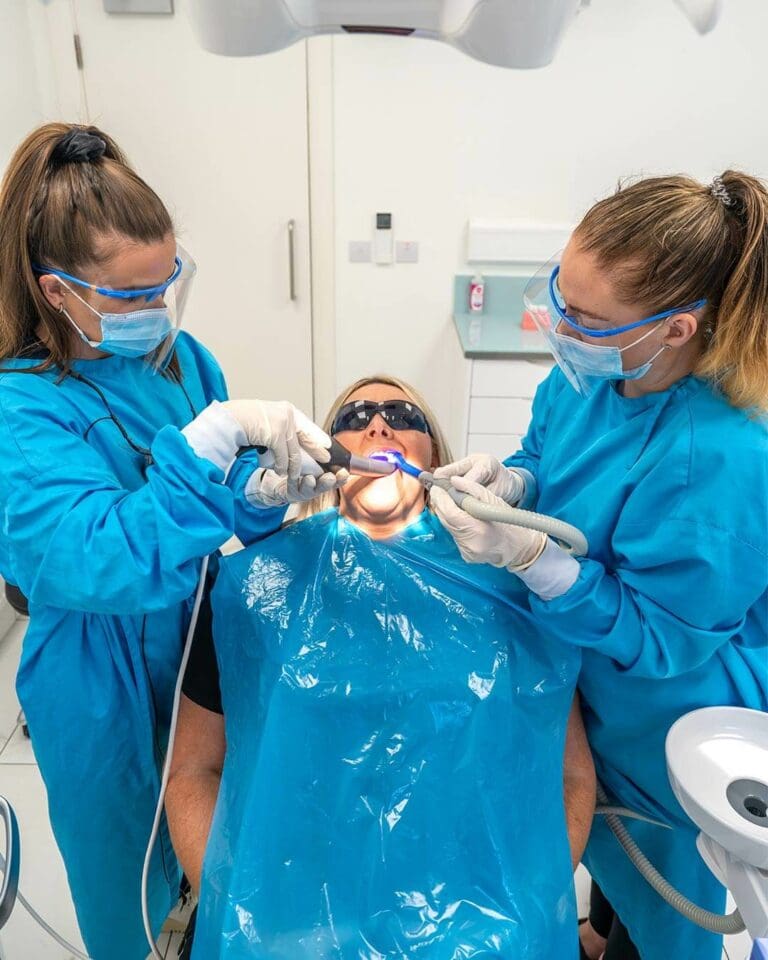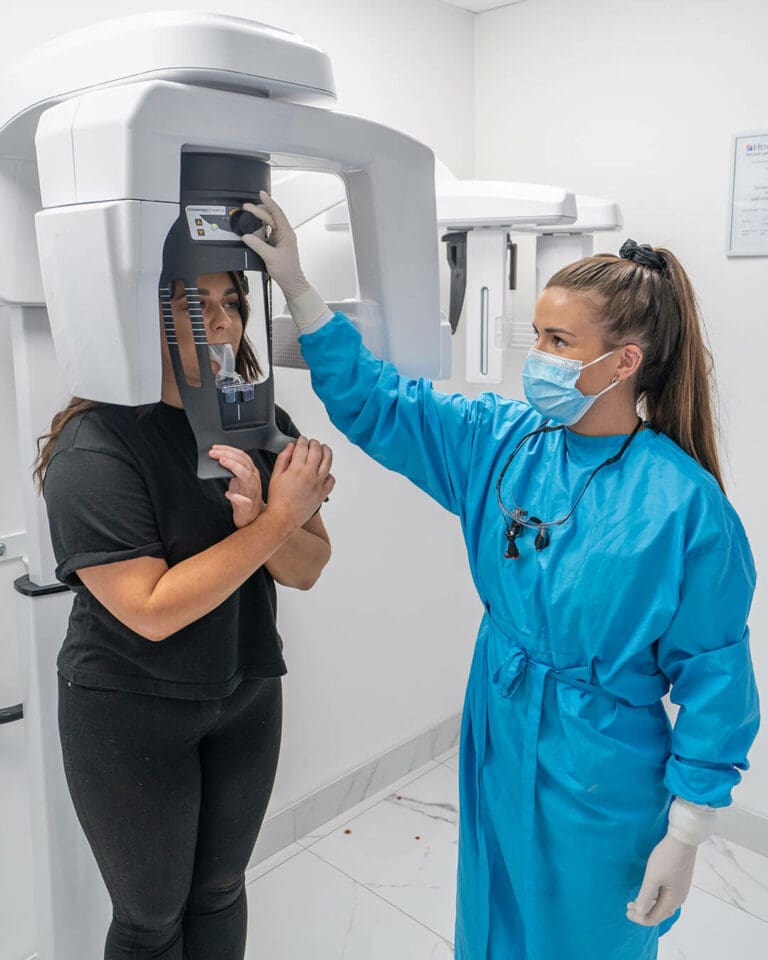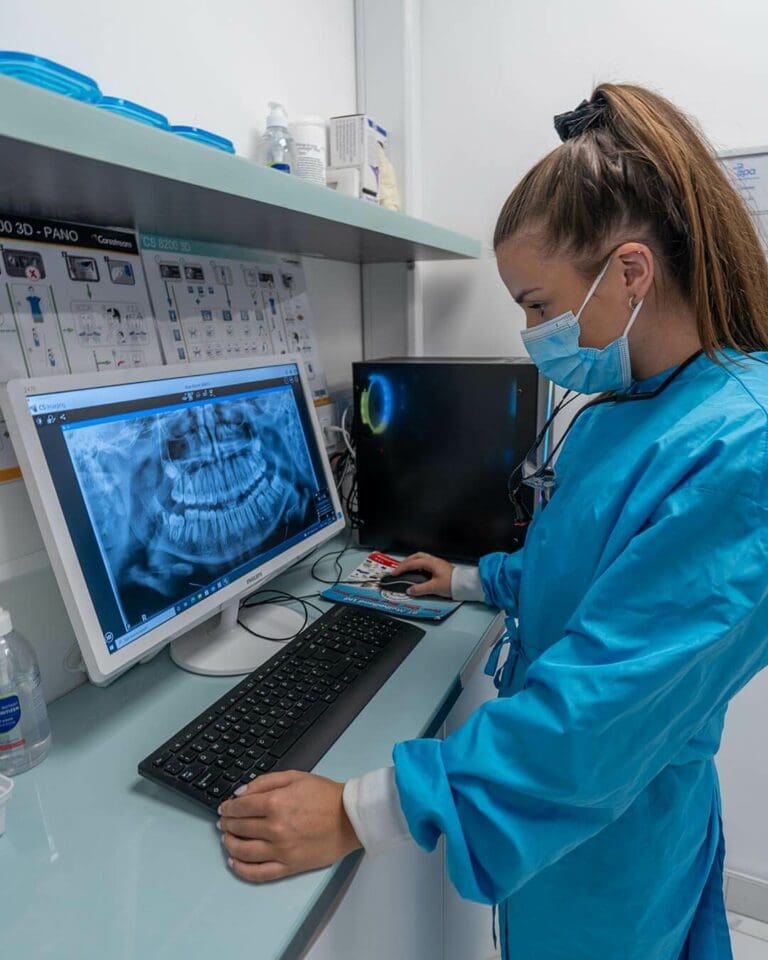X-Ray
X-rays pass through your body and make an image. This image can also be called a radiograph.
Radiographs allow the dentist to see deep inside the tooth and its roots. They show any decay or gum disease or bone loss.
Types of X-Rays
A “bitewing” is gripped between your teeth. The radiograph then shows the areas between the teeth, but not the roots.
A “periapical” is placed next to the tooth and the image shows the whole tooth and its root.
A “panoramic x-ray” is a large radiograph which shows all the haw and teeth. The machine that takes them moves around your head while you stand still taking 10 seconds.
Dental cone beam computed tomography (CBCT) is a special type of x-ray equipment used when regular dental or facial x-rays are not sufficient. Your doctor may use this technology to produce three dimensional (3-D) images of your teeth, soft tissues, nerve pathways and bone in a single scan.
How Do They Work
Radiographs require tiny amounts of radiation. If you are concerned about safety, it may be helpful to know that the amount of radiation involved in taking a dental x-ray is very low.
Sometimes it is useful for the dentist to compare a new picture with one taken some time ago, all of which are stored on your chart.
Many forms of dental treatment rely on radiographs. Sometimes simply looking at your mouth cannot give a dentist as much information as looking below the surface with x-rays.


